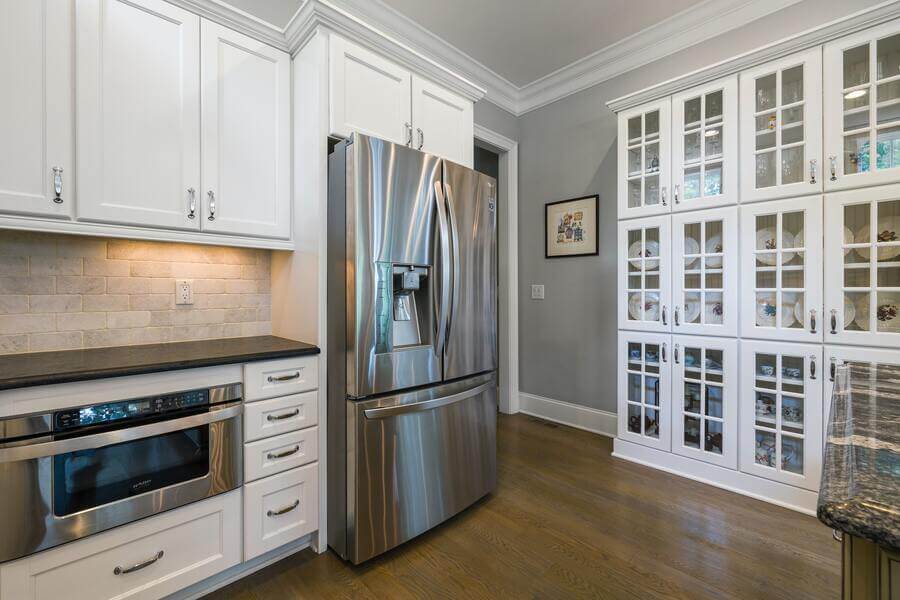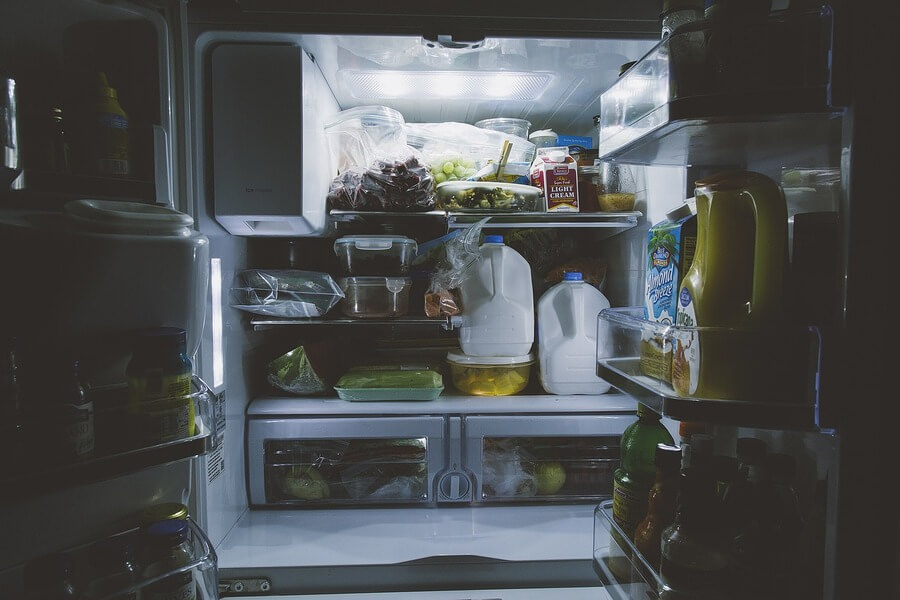Like other premium refrigerator brands, KitchenAid is among the favorites for most homeowners. Not only does it come in an elegant design, but it also has a sturdy build and energy-efficient features. With these features, you are sure your food will stay fresh for long.

That said, the cooling may sometimes go off. While a lack of power can cause this, other internal issues may be the source. Many factors come into play, from a faulty circuit board to a broken condenser fan. This article looks at the most common and offers solutions to them.
Faulty Circuit Board
A circuit board is an essential element that contains the electronic components that control the refrigerator. The circuit board governs anything from temperature regulation, and ice-making, to lightning. The circuit board is likely faulty if your KitchenAid refrigerator cooling is off.
Solution
- Unplug the refrigerator from the power source for a few minutes and then plug it back in. A power cycle might solve the issue.
- Inspect the circuit board for physical damage, such as corrosion, burned components, and loose connections. If there’s any, you must replace it with a new one.
- If your KitchenAid refrigerator has error codes, check them while consulting the user manual to gauge what could be the issue.
- Use a multimeter to test the circuit board for current continuity. When trying for a present, please set it to the range the board consumes. The same case applies to resistance.
- If there’s no continuity, consider replacing it with a new one. Again, consult the user manual to determine which model is compatible with your KitchenAid refrigerator model. You can buy from the manufacturer or a third-party retailer.
- Install the new circuit board, following the installation steps that come with it.
- Test whether your refrigerator is working efficiently.
If you are not comfortable troubleshooting your refrigerator, consider consulting a technician.
Broken Condenser Fan
Most KitchenAid refrigerators come with a condenser fan at the unit’s back. It helps dissipate heat from the condenser coils, which helps cool your refrigerator.
Accumulating debris, dirt, and lint on the blades can impede movement. This can eventually cause it to become broken.
Solution
- While the refrigerator is turned off, inspect the condenser fan for any visible damage. Check for broken blades, corrosion, or loose connections. You’ll need to replace the fan in case of broken edges and corrosion. You can tighten loose connections using a screwdriver.
- Test the condenser fan using a multimeter. Check whether the voltage and current are within the expected range. You’ll need to check the capacitor if no power reaches the motor. Otherwise, the engine might be faulty if the voltage and current are within the correct range.
- If the motor does not run when supplied with power or runs but makes noise, you must replace it. You can order a replacement condenser fan from KitchenAid or a verified third-party retailer.
- Install the new condenser fan where the old one was located, ensuring it is tightly held in place. Remember to follow the installation instructions to avoid future problems.
Dirty Condenser Coils
Condenser coils are located at the back of the refrigerator. They work together with the compressor to cool your refrigerator. Dirt, debris, and pet hair can easily collect around them since they are outside.
As such, they may not release heat, causing your KitchenAid refrigeration cooling to be off.
Solution
- Unplug your refrigerator from the power source to avoid electrocution and other electrical hazards.
- Place the refrigerator in an open space to access the condenser coils.
- Locate the condenser coils at the back of your refrigerator near the compressor. If your model has one, you must remove the cover around them.
- Use a vacuum cleaner to trap all debris and dust. Ensure to use the vacuum with a narrow attachment. This will help remove litter in hard-to-reach areas. Make sure to vacuum around, above, and below the coils.
- Use a soft brush to remove any remaining debris and dust. Be gentle on the coils to avoid damaging them.
- Replace the cover.
- Connect the refrigerator to the power source and check whether the cooling is on.

Compressor Failure
The compressor is the most crucial component of your KitchenAid refrigerator. It circulates the refrigerant around the system, absorbing heating from inside the fridge.
It then dissipates it through the condenser coils. If the compressor is faulty, your KitchenAid refrigerator will be off.
Solution
- Unplug the refrigerator from the power source.
- With the refrigerator in an open area, locate the compressor. It is located at the bottom of the unit.
- Turn off the refrigerant valves using valve wrenches.
- With the valves closed, connect the recovery machine to your refrigerator. Make sure to consult the user manual to avoid spilling the refrigerant.
- The recovery machine connected to the refrigerant system will remove the refrigerant and store it in a tank.
- Disconnect the refrigerant lines from the compressor using Allen wrenches. Make sure not to spill any refrigerant.
- Close the refrigerant lines to prevent entry of debris and moisture.
- Remove the faulty compressor from the refrigerator.
- Install the new compressor.
- Connect the refrigerant lines to the new compressor.
- Test the refrigerator to make sure the cooling is on.
Consider working with a refrigerator or HVAC technician if the process seems daunting.
Faulty Door Switch
When you open the door, the door switch turns on the light and evaporator fan. If the door switch is faulty, the evaporator fan may not turn on, meaning your KitchenAid refrigeration cooling will be off.
Things such as dirt and debris, moisture and tear, and wear can cause the door switch to malfunction.
Solution
- Unplug the refrigerator from the power source.
- Locate the door switch. It is located on the door frame of the refrigerator near the hinge.
- Disconnect the wires from the circuit board to the door switch.
- Inspect the switch for physical damage, such as signs of overheating, broken components, and loose wires.
- If there is no visible damage, use a multimeter to test the continuity of the door switch. To do this, set the multimeter to the preset resistance and current range. If the button is working correctly, you’ll see a change in resistance.
- If it is not working correctly, remove it from the door frame and replace it with a new one.
- Install the new switch in the door frame.
- Connect the wires to the switch.
- Finally, test the door switch to ensure it works as it should.

Final Thoughts
KitchenAid refrigerators can sometimes have their cooling go off. While there are many reasons for this, the most common are a faulty door switch, dirty condenser coils, and a faulty circuit board. The best part is that following the above solutions can quickly address these issues.
If troubleshooting appliances differ from your coffee, consider calling a certified technician for a proper diagnosis. If you do it independently, observe safety measures and buy replacement products from the manufacturer or a third-party dealer.
